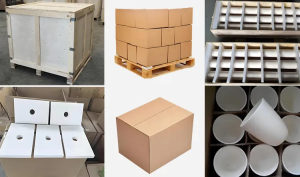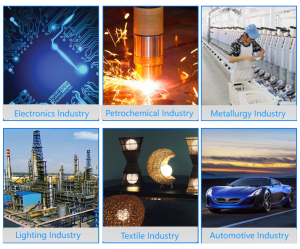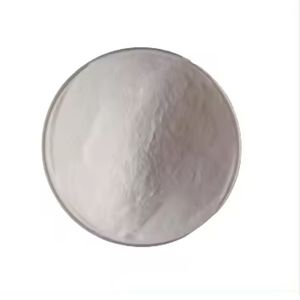Professional industry ceramic supplier, silicon nitride, silicon carbide, aluminum nitride and any other kinds of ceramics.
1. Introduction
Just 24 hours ago, a major U.S.-based semiconductor materials startup announced a breakthrough in vertical gradient freeze (VGF) crystal growth using custom-engineered silicon carbide crucibles—enabling purer, larger-diameter silicon ingots with fewer defects. This development underscores a quiet but vital trend: as demand surges for high-performance semiconductors in electric vehicles and renewable energy systems, the humble silicon carbide crucible has become an unsung hero in advanced manufacturing.
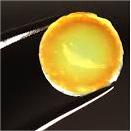
While most people associate silicon carbide with abrasives or brake discs, its use in high-temperature, contamination-sensitive processes like semiconductor crystal growth is where it truly shines. In this article, we’ll dive into how silicon carbide crucibles enable cutting-edge tech—and why alternatives like zirconia crucibles or alumina tubes fall short in these extreme conditions.
2. Why Silicon Carbide Crucibles Dominate High-Purity Crystal Growth
Growing single-crystal silicon for semiconductors requires temperatures above 1,400°C in ultra-clean, inert atmospheres. Any impurity leaching from the crucible can ruin the entire batch. That’s where the silicon carbide crucible excels.
Silicon carbide offers exceptional thermal conductivity, chemical inertness, and mechanical strength at high temperatures. Unlike alumina (Al2O3) or zirconia (ZrO2), which can react with molten silicon or introduce oxygen impurities, high-purity silicon carbide remains stable and non-reactive—even during prolonged exposure to molten semiconductor materials.
- Resists thermal shock better than alumina ceramic tubes
- Maintains structural integrity up to 1,650°C in inert atmospheres
- Minimal contamination risk compared to zirconia crucibles

3. Beyond the Crucible: The Ecosystem of Advanced Ceramics in Semiconductor Manufacturing
While the silicon carbide crucible is central, it doesn’t work alone. The furnace setup often includes complementary components made from other advanced ceramics. For instance, silicon nitride ceramic parts—like silicon nitride rings or custom silicon nitride heat shields—are used for insulation and support due to their excellent creep resistance and low thermal expansion.
Interestingly, some manufacturers confuse silicon nitride with silicon carbide. Though both are advanced ceramics, they serve different roles. A silicon nitride crucible factory might produce lab-scale containers, but silicon nitride lacks the thermal conductivity needed for large-scale crystal growth—making silicon carbide the preferred choice for crucibles.
Meanwhile, comparisons like boron carbide vs silicon carbide often arise in armor or nuclear applications, but boron carbide is rarely used in crucibles due to its higher cost and lower oxidation resistance at high temperatures.
4. Real-World Integration: From Crucibles to Furnace Architecture
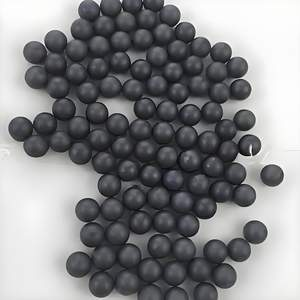
Modern crystal growth furnaces integrate multiple silicon carbide-based components beyond just the crucible. You’ll find silicon carbide ceramic columns supporting the load, silicon carbide burner nozzles regulating gas flow, and even rbsic silicon carbide tile blocks lining the chamber walls for uniform heat distribution.
In tube furnace configurations, silicon carbide tubes—sometimes called silicon carbide ceramic tubes for furnace—act as protective sheaths for thermocouples or as structural elements. These porous or dense variants, including silicon carbide thermocouple protection tubes, ensure precise temperature monitoring without contamination.
Even ancillary items like silicon carbide discs or silicon carbide ceramic grinding discs may be used during post-processing to shape or polish raw ingots, though diamond-coated versions are more common for final finishing.
5. Debunking Myths: Kitchenware Isn’t the Same as Industrial-Grade
A quick online search reveals countless listings for ‘silicon carbide ceramic baking dish,’ ‘silicon carbide dinner ceramic plates,’ or ‘silicon carbide ceramic casserole dish.’ While these consumer products leverage silicon carbide’s heat retention, they’re typically composites or glazes—not pure, sintered silicon carbide like industrial crucibles.
True high-purity silicon carbide crucibles are manufactured through specialized processes like reaction bonding (RBSiC) or sintering under inert gas—far removed from the handcrafted ceramic plates or silicon carbide ceramic serving bowls sold for home use. Confusing the two can lead to unrealistic expectations about performance or safety.
6. Conclusion
The silicon carbide crucible may not grab headlines like AI chips or quantum computers, but it’s foundational to producing the ultra-pure materials that power them. As the semiconductor and green energy industries push toward larger, cleaner crystals, demand for advanced silicon carbide components—from crucibles to tubes to structural tiles—will only grow. Understanding this niche application reveals how deeply advanced ceramics enable tomorrow’s technology.
Our Website founded on October 17, 2012, is a high-tech enterprise committed to the research and development, production, processing, sales and technical services of ceramic relative materials such as Silicon. Our products includes but not limited to Boron Carbide Ceramic Products, Boron Nitride Ceramic Products, Silicon Carbide Ceramic Products, Silicon Nitride Ceramic Products, Zirconium Dioxide Ceramic Products, etc. If you are interested, please feel free to contact us.

